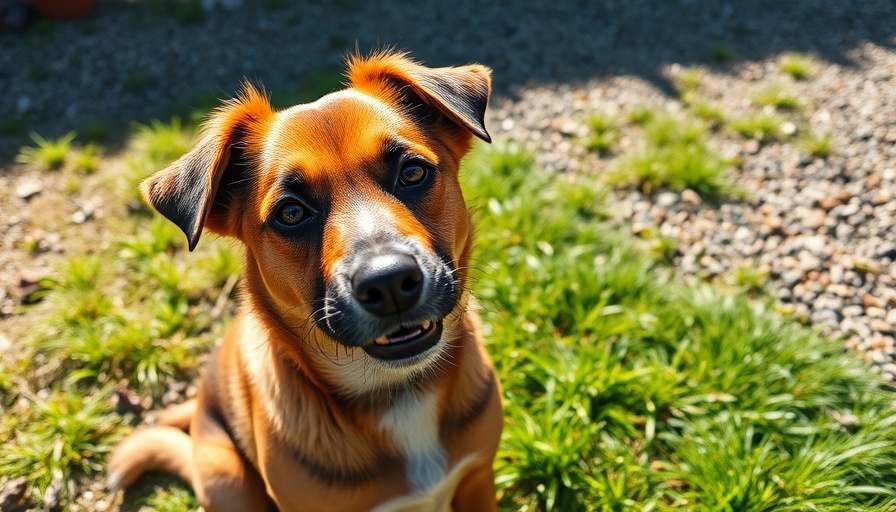
Discovering the World: Lajka's Adventurous Spirit
Meet Lajka, an Alpine Dachsbracke who has been embracing her newfound freedom and adventurous spirit after her recent rescue. Over just a few months, she has transformed from a shy newcomer to a curious explorer, showing that even timid dogs can find their confidence. Her journey reflects not only personal growth but also the importance of understanding canine behavior and the gradual process of allowing pets to explore their environment.
GPS: Safety in Exploration
The first step to letting Lajka roam was ensuring her safety with a GPS collar. It's a valuable tool, especially for pet owners who worry about their furry friends getting lost. As seen in Lajka's case, these collars can help track a pet's explorations and provide comfort to anxious pet parents. Many veterinarians and pet professionals recommend GPS collars to keep track of adventurous pets, particularly in remote areas where the risks of wildlife encounters may be higher.
Understanding Canine Behavior: The Importance of Freedom
Lajka's story underscores a significant aspect of dog behavior: the need for freedom and exploration. Canines are naturally curious animals, and allowing them to safely explore their surroundings helps stimulate their mental and physical health. Many pet trainers advocate for this method of training, noting that exploration can lead to enhanced behavioral responses and a strengthened bond between the pet and owner.
Lessons on Anxiety: For Pets and Owners
Lajka's case also highlights the challenge of managing anxiety, both for dogs and their owners. As her caregiver learns to let go and allow her to explore, she faces her own anxieties. This dynamic emphasizes the importance of building trust between pets and owners, and how letting go of control can lead to a more fulfilling relationship. For veterinarians and other pet professionals, this aspect is crucial when advising pet parents on how to approach anxiety in dogs.
The Transformative Power of Canine Exploration
Lajka's experience is a testament to the transformative power of exploration. After spending hours digging her hole in the fields, she not only gains confidence but also expresses her natural behaviors. This autonomy is crucial for her emotional well-being. Pet owners and trainers can learn from this: encouraging such behavior in controlled settings can lead to improved happiness and health for pets.
Creating a Safe Space for Adventure
The environment plays a significant role in a dog's ability to explore. Lajka thrives in a remote area, where her chances of encountering hazards are reduced. For pet owners in urban settings, options like building catios or using secure outdoor spaces can help provide safe exploration. Furthermore, pet accessory manufacturers could enhance this experience with specialized gear designed for safety during exploratory outings.
Connecting Through Adventures: Stories of Joy
Lajka’s joyous exploration can inspire stories of other pet adventures, showcasing the bond between humans and their furry friends. These narratives resonate with pet parents and advocates who seek understanding and connection with their pets' experiences. Encouraging such sharing fosters a community of pet lovers, providing emotional support and shared insights for navigating the joys and challenges of pet parenting.
Turning Insights into Action: Practical Tips for Pet Owners
Encourage pets to explore by providing toys and treats that stimulate their curiosity. Training techniques that reward adventurous behaviors can further enhance a pet's confidence. Moreover, pet grief counselors and trainers can offer strategies for managing the anxiety of both pets and their owners, fostering environments conducive to fun and exploration.
Ultimately, Lajka’s explorations remind us all of the importance of allowing our pets to embrace their natural instincts. As a community of veterinarians, pet nutritionists, trainers, and advocates, we can work together to ensure that our pets live their fullest, most adventurous lives.
 Add Row
Add Row  Add
Add 




 Add Row
Add Row  Add
Add 


Write A Comment